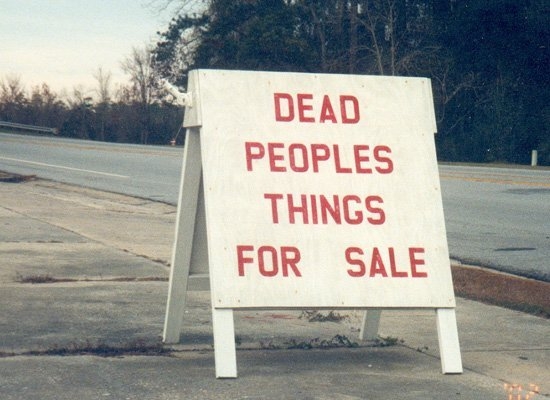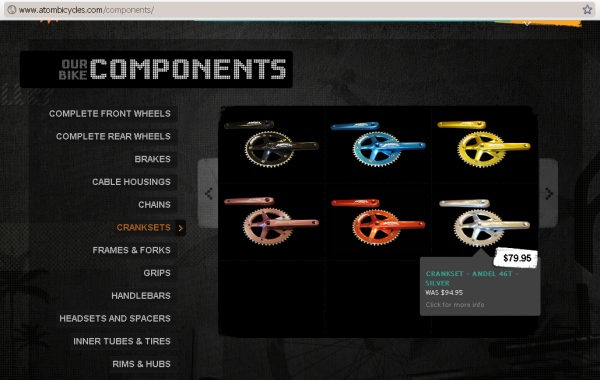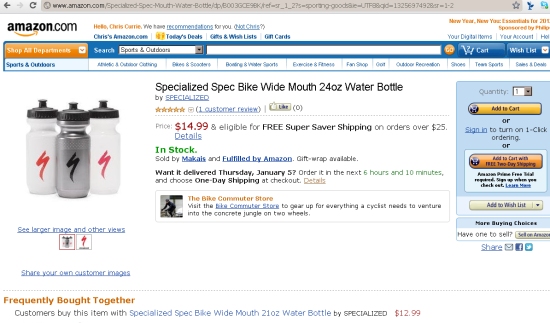Let’s talk about really direct marketing. Sure, I’ve been exercising an unhealthy obsession with guerrilla e-commerce lately, working to convince small shop owners to start using the almighty Internet for something more than just a Google map to your location and (God forbid) printable coupons. It’s possible–or rather, let’s go with “super necessary” for small businesses to dip a toe into online sales, but all that will have to wait.
Why? Because the bike industry is witnessing a masterful education in the fine art of public relations self-destruction and brand anti-marketing that we’d be fools to ignore. Over the weekend, Specialized got their ass handed to them by Volagi, and then things got interesting.
Turns out Specialized spent about $1.5-million on their soul-killing, heavy-handed intimidation tactic/wild goosechase–an absolutely disgusting amount of money to piss away under any circumstances, and even more so right now, when John Q. Public is hyper-sensitive to wasteful, inappropriate behavior of the part of big companies. Almost every word that’s been printed regarding this entire sad episode has done damage to Specialized, and the facts haven’t done them any favors, either. The revelation that this much money was wasted in the service of stifling innovation and intimidating competition won’t do much to reverse the public perception of Specialized as a giant, out-of-touch, monopolistic, evil-doing gaggle of douchebags. Not to worry, though, because, once again, somebody let Specialized founder Mike Sinyard communicate with the public.
This lawsuit was a matter of principle and about protecting our culture of trust and innovation. We respect the ruling of the court in our favor. We are very satisfied with the outcome and the damages set at $1.00. We really want to put all our passion and time into growing the sport of cycling.”
Clearly, Sinyard and Rupert Murdoch have the same “magic touch” when it comes to understanding their public.
Read that quote again, if you think you’re up to it. The first sentence sets a good tone, and then, well . . . it makes you wonder if anyone at Specialized realizes the mic is on. Really, guys? You’re really “very satisfied” to’ve spent a million and a half bucks getting a dollar in return? If you’re trying to tell us you’re glad this didn’t have a destructive effect on Volagi, you’re sure not sounding that way, which means you’re–miraculously–sounding both disingenuous and unconcerned that you just wasted so much cash on a half-assed attempt at evil. And, even if that’s the case–even if you are sort of pissed off and dazed still, you realize, right, that you’re not supposed to let everyone know that’s where you are with this? It begs the question, do these guys have a PR department? Apparently, Specialized can spend $1.5-million on trying to stifle competition, but there’s nobody even making $10 an hour to give the main man’s missives a once-over to ensure they’re not repulsively demeaning and logically adrift.
Turns out I have some free time right now, and sounds like The Big S could use some pro bono help, so here’s my free rewrite of how anyone with even a small amount of respect for his customers would have written that letter:
“This lawsuit was a matter of principle and about protecting our culture of trust and innovation. At Specialized, we really do believe in our products more than anything, and that passion sometimes leads us to protect them at all costs. We’re making bikes because we believe in the positive things that a bicycle can do, and that’s a love we share with Volagi and every other brand. While we feel strongly enough about our reputation and our innovative products to take the steps we took in this matter, we sincerely respect and admire the desire Robert and Barley have shown to distinguish their product, and we hope they, and all those with a desire to make cycling better, continue to share our passion for making great bikes.”
Or some such shit. (I’m available for freelance work, by the way, for press releases, writing wedding invitations, really bitchin’ grocery lists, etc..)
There is a way to communicate to the public while still side-stepping legal landmines, but it involves seeming human and actually relating to your customers, instead of poking rifle barrels out of your ivory tower and doubling down on the draconian bullshit.
But, anyway, this is good for us–good for anyone studying how not to communicate with the public. Pop quiz: guess which company, Specialized or Volagi, better understands how to use social media? Here’s a hint: contrast Sinyard’s statement way above, with this tweet from Volagi:
Best dollar we ever spent.”
The thing some companies still don’t seem to get about social media is that they’re participating in it whether they want to be or not. You’re always marketing directly to your consumers. When you’re announcing a hot new product, or when you’re suing somebody. There’s a level of transparency to today’s businesses that some CEOs just don’t seem to understand.
Some, on the other hand, seem to understand it all too well. Maybe Sinyard should take a cue from “International Grand Confrerie Sommelier,” wine consultant to Costco, and maestro of social media, “Krunch,” who prefers to engage his social critics more directly. Disgruntled by a woman’s bad review of his business on Yelp, “Krunch” apparently took it upon himself to create a fake blog in the woman’s name and use it to describe her as a drug addict and prostitute, emailing her a link to the blog and writing, “Now every time a company for a job or someone searches YOU on google they will read my side of the story.”
Well played, sir. You are, indeed, ready to “serve world leaders, heads of state and Fortune 100 members.” Now, to complete their public relations self-destruction masterpiece, all Specialized has to do is personally attack everyone who thought their lawsuit was a horrible idea. Given how they’ve handled things to this point, nothing would surprise me.
It’s not like they’d have to work very hard to intimidate some members of the cycling press, who fall all over themselves to self-redactedit anything meaningful anyway. In the dying embers of this train wreck, we find this article on Velonews, which features a slightly more intriguing editorial preamble than most:
At the author’s request, the editorial notes at the bottom of this story were rewritten. They did not reflect the opinions of VeloNews.com.”
Is it just me, or does the editorial quote above read a hell of a lot like, “After having a gun barrel pressed to his forehead (no easy task to do to a man who’s, like, 8-feet tall), Mr. Zinn would like to reconsider those things he initially said and meant but might’ve seriously pissed off one of the largest advertisers in our industry.” Say, does anyone have a screen grab of how Lennard Zinn’s original article read? I’d really like to see that, Velonews. Anyone?















